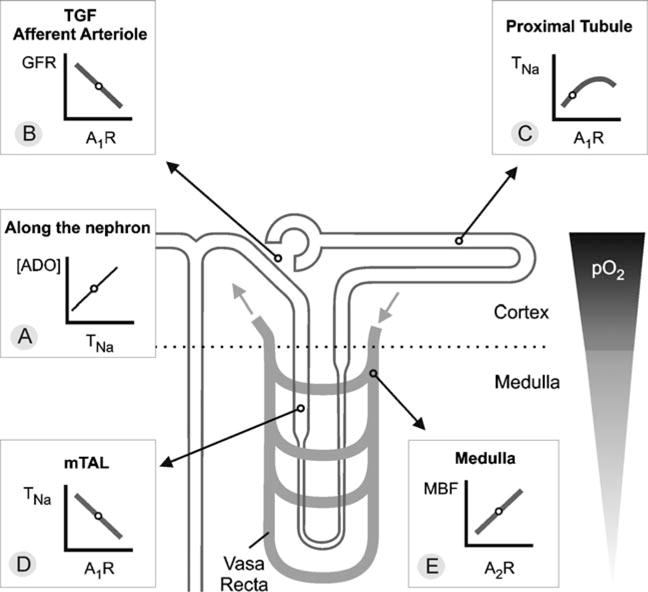Fig. 1.

a–e Control of renal hemodynamics and transport by adenosine (ADO). The line plots illustrate the relationships between the given parameters. Small circles on these lines indicate ambient physiological conditions. In general, the medulla is at greater risk for hypoxic damage than the cortex due to a lower partial oxygen pressure (pO2). a In every nephron segment, an increase in reabsorption or transport of sodium (TNa) increases extracellular ADO. b ADO via A1AR mediates tubuloglomerular feedback (TGF) and constricts the afferent arteriole to lower GFR. c In the proximal tubule, ADO via A1AR stimulates TNa and thus lowers the Na+ load to segments residing in the semihypoxic medulla. d In contrast, ADO via A1AR inhibits TNa in the medulla, including medullary thick ascending limb (mTAL). e In addition, ADO via A2AR enhances medullary blood flow (MBF), which increases O2 delivery and further limits O2-consuming transport in the medulla (adapted from Vallon et al. 2006)
